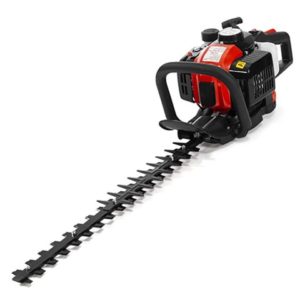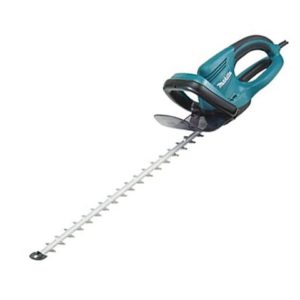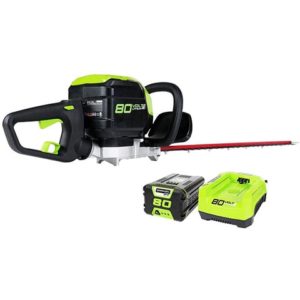When is the Best Time to Trim Your Hedges? Seasons, Timing & Technique
-
Pete Ortiz
- Last updated:
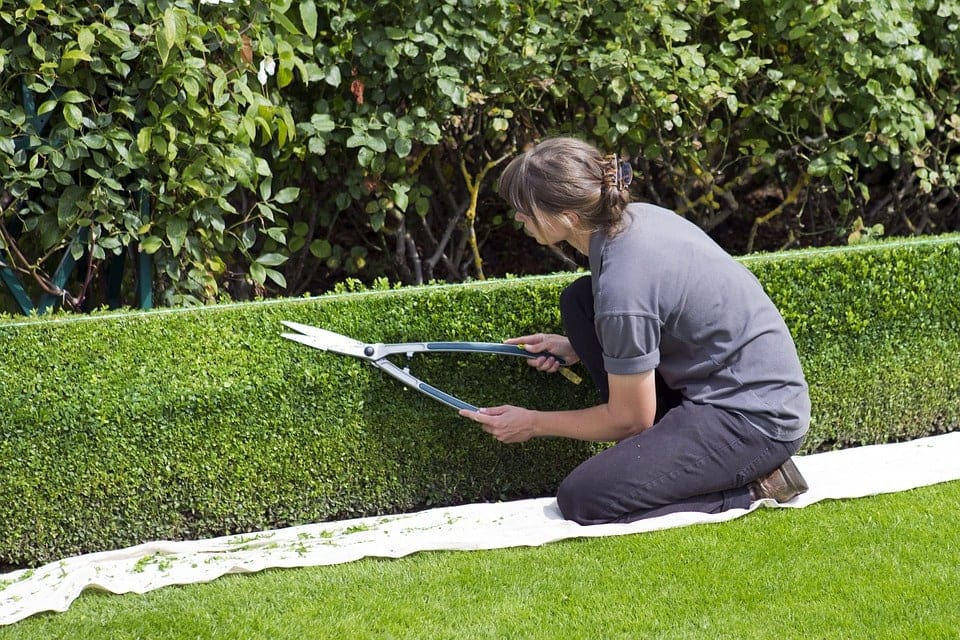
That hedges can add to your curb appeal is not debatable. A well-maintained hedge can even go as far as to boost your property value.
Fortunately, with the right equipment, you can keep your hedges looking heavenly. But there’s much more to keeping a hedge looking great than having free time, a trimmer, and a bit of enthusiasm. The aim of this article is to let you in on the best time to trim hedges, as well as tips to help you do a fantastic job.
The Best Time to Trim Hedges
This will depend on the type of hedge that you have in your yard; different types of hedges require pruning or trimming at different times. If you are not sure about your hedge, simply take a picture and perform a reverse image search on Google.
New Hedges
New hedges typically require trimming right after planting. Most hedge planting occurs during late winter or spring when the plants are yet to recover from dormancy. You can also plant in fall or summer when there is active growth. For those planted during spring, prune them immediately after planting before their buds begin to break. For summer-planted hedges, however, consider trimming them late in the season after they have gone dormant.
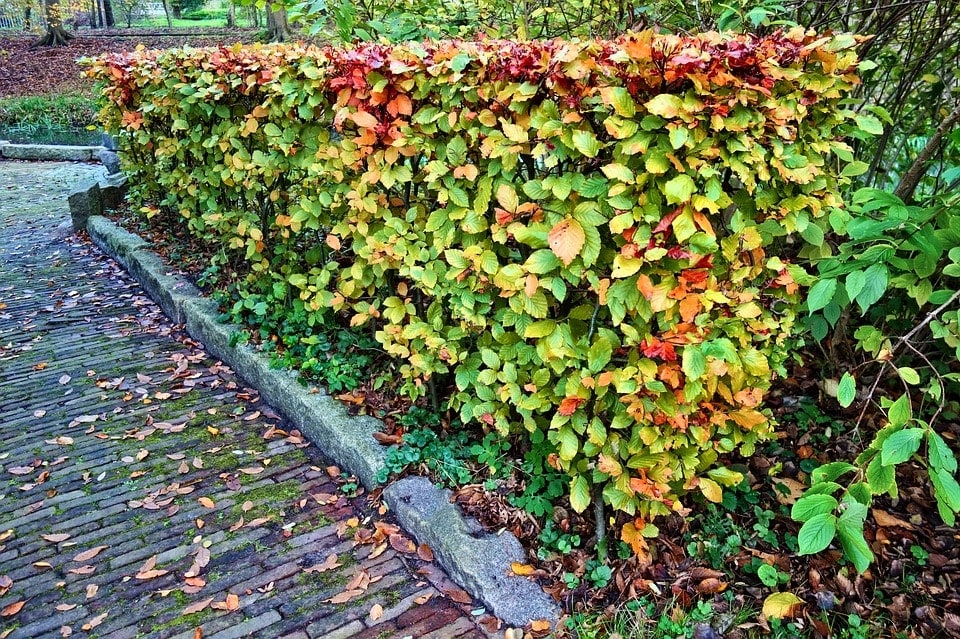
Flowering Hedges
You cannot afford to prune a flowering hedge at the wrong time. This might result in the plant not producing flowers during the next season.
Flowering hedges can be placed into two separate categories: those that bloom on old wood and those that bloom on new wood. New wood bloomers typically do not produce flower buds until spring when growth begins. Old wood bloomers, on the other hand, produce the following year’s buds during the current year.
The directive, therefore, is to prune new wood bloomers during early spring to allow them to recover in time for growth season. For those that bloom on old wood, prune them immediately after they finish flowering to allow them enough time to recover and produce buds for the next year’s bloom.
- Prune in early spring for plants that flower on new wood. This allows them to recover in time to blossom on schedule.
- Prune flowering shrubs immediately after they finish flowering. You should do this as quickly as possible so that they have enough time to produce the buds for next year’s bloom.
- Hydrangeas are a very popular type of flowering shrub. Some types produce flowers on old wood and some on new wood. Make sure you know what type of hydrangea you have before choosing the right time to prove it. As a rule of thumb, they need less trimming overall than other types of shrubs. They look their best when left as close to possible as their natural state. The exception for all plants is that dead limbs should be trimmed as soon as possible.
Evergreen Hedges
These hedges are typically grown for their foliage. Fortunately, they are not as fussy as flowering shrubs when it comes to the appropriate pruning time. The rule of thumb is to trim evergreen hedges right before they break their dormancy during late winter or early spring.
You should also consider performing regular light pruning during summer to prevent the overgrowth of branches. This is especially relevant when it comes to formal hedges.
Tips for Effective Trimming
You do not need to have a green thumb to do a good job at trimming hedges. All you need is the right equipment, knowledge, and practice. The following tips should get you started:
1. Choose Your Trimmer
There are three main types of hedge trimmers: electric, cordless, and gas-powered. Each type comes in various sizes, with the average length of the cutting bar being between 16 and 24 inches. Your choice of trimmer is going to be determined by factors such as the size of your hedge, its location on the property, and personal preferences.
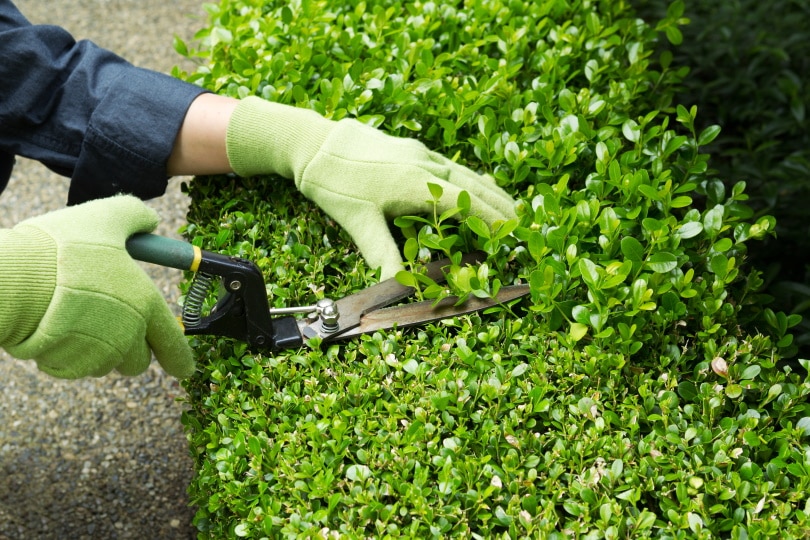
Gas-Powered Trimmers
These hedgers come with powerful engines that allow you to cut thick branches cleanly and quickly. They are also highly portable since they are not tethered to an extension cord, allowing you to work anywhere as long as you have gas in your tank.
Gas-powered trimmers are the most expensive type of hedgers on the market. Before you purchase one, you must also ensure that your homeowner’s association does not have laws restricting the use of gas-powered equipment.
Corded Electric Trimmers
These are the most popular types of hedge trimmers today, thanks to their ease of use and noiseless nature. Additionally, they do not require much maintenance. Another reason people opt for electric trimmers is their environmentally friendly nature.
Electric hedgers tend to be far more affordable than most gas-powered trimmers. The only drawback to these units is that they always have to be connected to a power source, in addition to not being as powerful as gas-powered units.
As a result, corded electric hedge trimmers are best suited for people with small yards.
Cordless Hedge Trimmers
Cordless hedge trimmers are basically electric hedgers that run on batteries. They combine the benefits of an electric trimmer with the portability of a gas-powered hedger.
The power, performance, and price of a cordless hedge trimmer depends on the size of its battery. High voltage batteries provide more power and have longer runtimes. However, they are also heavier and cost more.
2. Have all the Other Necessary Equipment
In addition to a trimmer, ensure that you also have the following:
Thick Gloves
Gloves will allow you to handle shrubbery, as well as the trimmer, without risking injury to your fingers.
Tarp
Laying a tarp below the trimming zone will make the cleanup process a lot easier.
Safety Goggles
Bits and chips of wood fly all over when using a trimmer. Therefore, wear safety goggles to protect your eyes.
Hand Clipper
Some of the trimming will involve using manual clippers. Invest in a good pair that has a good grip and which feels natural in your hand. Comfort is key when it comes to clippers to prevent the development of blisters.
3. Eliminate Overgrown Outer Branches
Start the trimming process by thinning out all thick areas on the outer edges of the shrub. Ensure to cut close to the stem. This is because while cutting near the top stimulates growth at the top, cutting close to the stem stimulates growth throughout the branch.

4. Thin Out the Interior
Go deeper into the shrub and see out any broken or dead branches. Removing them promotes airflow and reduces the risk of pathogenic growth, such as mold. Exercise restraint; you do not want to remove more than a third of the shrub’s growth.
5. Disinfect the Equipment from Hedge to Hedge
You do not want to spread diseases. This is why it is necessary to disinfect your shearer or trimmer before you move to the next hedge. The recommended disinfectant is a solution consisting of one part bleach and nine parts water.
In Conclusion
Well-trimmed hedges will dramatically boost the aesthetic appeal of your property. Moreover, they can help you hide parts of your compound that are less than flattering. The good news is that you can maintain your hedges with light trimming all year round. Deep hedging, however, requires that you know the appropriate times of the year for doing so. Hopefully, this article on when to trim edges has been of help.
Featured Image Credit: Pixabay
Contents



